
English Heritage is a charity that manages over 400 historic monuments, buildings and places. These include prehistoric sites, medieval castles, Roman forts, and country houses.

The War Office has referred to several British government organisations throughout history, all relating to the army. It was a department of the British Government responsible for the administration of the British Army between 1857 and 1964, at which point its functions were transferred to the new Ministry of Defence (MoD). Equivalent to the Admiralty at that time, the War Office was responsible for the Royal Navy (RN) and the Air Ministry, which oversaw the Royal Air Force (RAF). The name 'War Office' is also given to the former home of the department, located at the junction of Horse Guards Avenue and Whitehall in central London. The landmark building was sold on 1 March, 2016 by HM Government for more than £350 million, on a 250 year lease for conversion into a luxury hotel and residential apartments.

The Department for Culture, Media and Sport (DCMS) is a ministerial department of the Government of the United Kingdom. It holds the responsibility for culture and sport, and some aspects of the media throughout the UK, such as broadcasting. Its main offices are at 100 Parliament Street, occupying part of the building known as Government Offices Great George Street.

The Royal Arsenal, Woolwich is an establishment on the south bank of the River Thames in Woolwich in south-east London, England, that was used for the manufacture of armaments and ammunition, proofing, and explosives research for the British armed forces. It was originally known as the Woolwich Warren, having begun on land previously used as a domestic warren in the grounds of a mid-16th century Tudor house, Tower Place. Much of the initial history of the site is linked with that of the Office of Ordnance, which purchased the Warren in the late 17th century in order to expand an earlier base at Gun Wharf in Woolwich Dockyard.
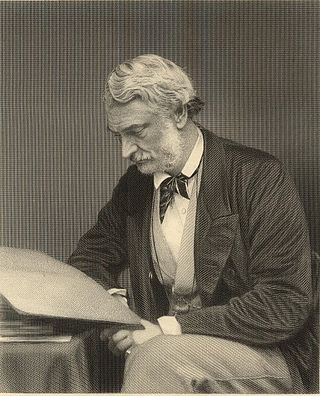
The First Commissioner of Works and Public Buildings was a position within the government of the United Kingdom of Great Britain and Ireland, and subsequent to 1922, within the government of the United Kingdom of Great Britain and Northern Ireland. It took over some of the functions of the First Commissioner of Woods and Forests in 1851 when the portfolio of Crown holdings was divided into the public and the commercial. The position was frequently of cabinet level. The office was renamed Minister of Works and Buildings and First Commissioner of Works in 1940, Minister of Works and Planning upon receiving statutory planning powers from the Ministry of Health in 1942, Minister of Works when those planning powers were moved to the Ministry of Town and Country Planning in 1943, and finally Minister of Public Buildings and Works in 1962. In this last form the commissioner had "additional responsibility for studying the problems of the building industry". On 15 October 1970 the role was amalgamated with the Minister of Transport and the Minister of Housing and Local Government in the Department of the Environment.

The Office of Public Works (OPW) is a major Irish Government agency, which manages most of the Irish State's property portfolio, including hundreds of owned and rented Government offices and police properties, oversees National Monuments and directly manages some heritage properties, and is the lead State engineering agency, with a special focus on flood risk management. It lies within the remit of the Minister for Public Expenditure, National Development Plan Delivery and Reform, with functions largely delegated to a Minister of State at the Department of Public Expenditure, National Development Plan Delivery and Reform with special responsibility for the Office. The OPW has a central role in driving the Government's property asset management reform process, both in respect of its own portfolio and that of the wider public service. The agency was initially known as Board of Works, a title inherited from a preceding body, and this term is still sometimes encountered.

Sir James Pennethorne was a British architect and planner, particularly associated with buildings and parks in central London.
The Office of Works was an organisation responsible for structures and exterior spaces, first established as part of the English royal household in 1378 to oversee the building and maintenance of the royal castles and residences.

Historic Royal Palaces is an independent charity that manages the United Kingdom's unoccupied royal palaces:

Carlton House Terrace is a street in the St James's district of the City of Westminster in London. Its principal architectural feature is a pair of terraces, the Western and Eastern terraces, of white stucco-faced houses on the south side of the street, which overlook The Mall and St. James's Park. These terraces were built on Crown land between 1827 and 1832 to overall designs by John Nash, but with detailed input by other architects including Decimus Burton. Construction was overseen by James Pennethorne. Both terrace blocks are Grade I listed buildings. A separate but linked cul-de-sac at the terrace's western end is named Carlton Gardens and has a few additional townhomes.

The Ministry of Supply (MoS) was a department of the UK government formed on 1 August 1939 by the Ministry of Supply Act 1939 to co-ordinate the supply of equipment to all three British armed forces, headed by the Minister of Supply. A separate ministry, however, was responsible for aircraft production, and the Admiralty retained responsibilities for supplying the Royal Navy. During the war years the MoS was based at Shell Mex House in The Strand, London.

Royal Ordnance Factories (ROFs) were munitions factories run by the UK government during and after the Second World War. The three main types of factories were engineering, filling and explosives, and these were dispersed across the country for security reasons. ROFs were the responsibility of the Ministry of Supply and later the Ministry of Defence until privatisation in 1987.
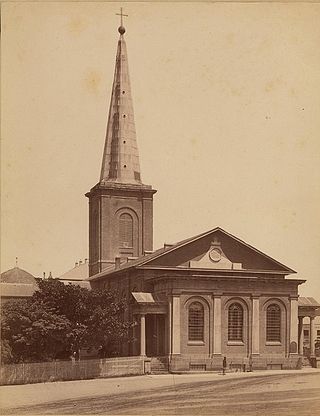
The New South Wales Government Architect, an appointed officer of the Government of New South Wales, serves as the General Manager of the Government Architect's Office (GAO), a multi-disciplinary consultancy operating on commercial principles providing architecture, design, and engineering services, that is an agency of the government within NSW Public Works.

Caversham Park is a Victorian-era stately home with parkland in the suburb of Caversham on the outskirts of Reading, England. Historically located in Oxfordshire, it became part of Berkshire with boundary changes in 1977. Caversham Park was home to BBC Monitoring and BBC Radio Berkshire. The park is listed as Grade II in the English Heritage Register of Historic Parks and Gardens.
The Property Services Agency (PSA) was an agency of the United Kingdom government, in existence from 1972 to 1993. Its role was to "provide, manage, maintain, and furnish the property used by the government, including defence establishments, offices, courts, research laboratories, training centres and land".
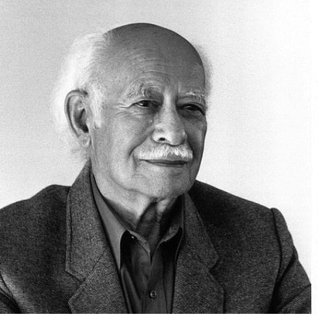
Joseph Stein was an American architect and a major figure in the establishment of a regional modern architecture in the San Francisco Bay area in the 1940s and 1950s during the early days of the environmental design movement. In 1952, he moved to India and in 1955 was tasked with the planning of Durgapur in West Bengal, India along with Benjamin Polk. He was commissioned with this task in order to facilitate the establishment of Durgapur Steel Plant later on in 1959 followed by the Durgapur Steel City and Township. He is noted for designing several important buildings in India, most notably in Lodhi Estate in Central Delhi, nicknamed "Steinabad" after him, and where today the 'Joseph Stein Lane', is the only road in Delhi named after an architect. He is also famous for being the architect of the scenic Indian Institute of Management Kozhikode's campus. The Government of India awarded him the fourth highest civilian award of Padma Shri in 1992. His works remain even more relevant in the modern context as need for sustainable and humane architecture is felt.
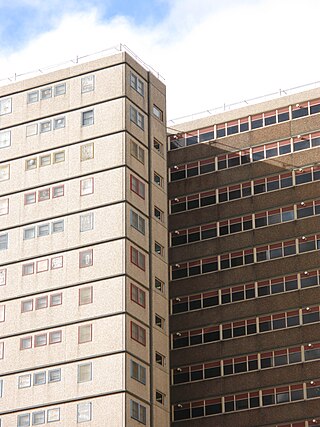
The Housing Commission of Victoria was a Government of Victoria body responsible for public housing in Victoria, Australia. It was established in 1938, and was abolished in 1984.
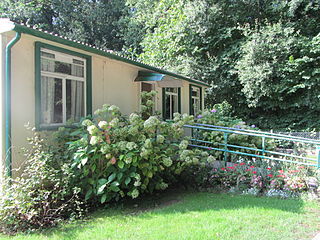
Prefabs were a major part of the delivery plan to address the United Kingdom's post–World War II housing shortage. They were envisaged by war-time prime minister Winston Churchill in March 1944, and legally outlined in the Housing Act 1944.

The Department of the Director of Dockyards, also known as the Dockyard Branch and later as the Dockyards and Fleet Maintenance Department, was the British Admiralty department responsible from 1872 to 1964 for civil administration of dockyards, the building of ships, the maintenance and repair of ships at dockyards and factories, and the supervision of all civil dockyard personnel.

The Architectural and Engineering Works Department was the main civil engineering department of the British Royal Navy responsible constructing, and maintaining naval buildings, dockyards, ports and managing civil engineering staff from 1837 to 1919 it was superseded by the Civil Engineer in Chief's Department.

















